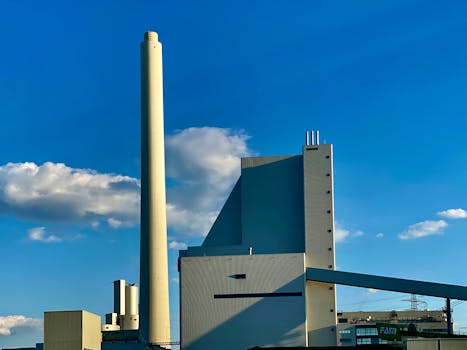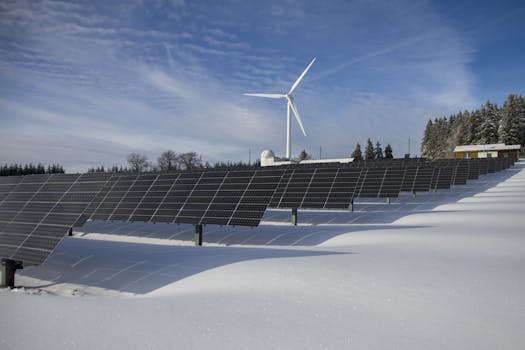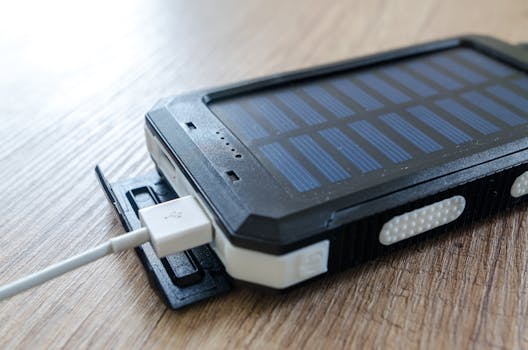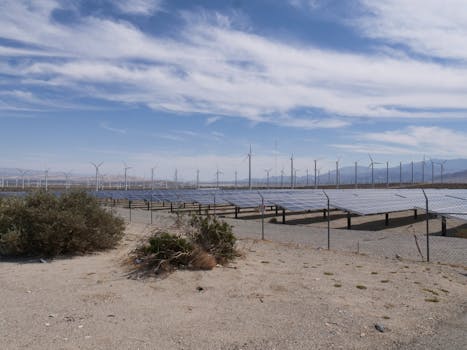
Introduction to Renewable Energy Breakthroughs

As the world grapples with climate change and the burgeoning demand for clean energy, technological advancements in renewable energy sources are crucial. This article delves into the latest breakthroughs in renewable energy technologies and their implications for a sustainable future.
Innovations in Solar Energy

Solar power has gained significant traction over the past decade, and recent innovations are taking this technology to new heights. One of the most notable breakthroughs is the development of perovskite solar cells. These cells promise to offer higher efficiencies at lower production costs compared to traditional silicon solar panels. Researchers are noting conversion efficiencies approaching 30%, which is vital for making solar energy competitive in the energy market.
Additionally, floating solar farms have emerged as an innovative way to utilize dead water bodies, maximizing land use while generating clean electricity. These facilities not only harness solar power but also ecological benefits by reducing water evaporation and inhibiting algae growth.
Advancements in Wind Energy

Wind energy continues to evolve with advances in turbine technology making them larger, more efficient, and capable of generating energy in lower wind conditions. New blade designs inspired by nature have improved aerodynamics, further increasing energy capture. Moreover, vertical-axis wind turbines are gaining popularity for urban settings, providing opportunities for decentralized energy generation.
Offshore wind farms are also seeing incredible growth as advancements continue in turbine size and technology; recently deployed offshore turbines can now produce over 10 MW each, representing an entire sea of energy potential, untapped until now. This shift allows for larger installations in wind-rich areas beyond our shorelines without occupying valuable land resources.
Energy Storage Technologies

A significant barrier to renewable energy deployment remains the ability to store excess energy for use when generation is low. Recent breakthroughs in battery technology, like solid-state batteries and flow batteries, are changing the landscape. Solid-state batteries promise increased energy density, longer life cycles, and enhanced safety metrics compared to traditional lithium-ion batteries, while flow batteries provide scalable energy solutions for larger electrical grids.
Mass-scale energy solutions are evolving too, with technological advancements in pumped hydro storage, compressed air, and thermal energy storage introducing ways to store energy in diverse formats, ensuring reliability as renewable sources become the primary modalities of energy generation.
The Role of Artificial Intelligence and IoT

The integration of Artificial Intelligence (AI) and the Internet of Things (IoT) into energy systems is reshaping the energy grid. Smart grid technologies developed using AI are optimizing energy consumption, predicting and managing loads more effectively. This management capability smoothes the variable nature of renewable energy sources to create a more resilient grid.
Moreover, IoT devices provide real-time data analytics for optimizing energy usage across sectors — homes, manufacturing, transportation, and more. Consequently, these interconnections enhance energy efficiency patterns, driving down overall consumption while assuring we increasingly rely on renewables.
Conclusion

The evolution of renewable energy technologies is revolutionizing our approach to sustainable energy. With continuous innovations like advanced solar cells, cutting-edge wind turbines, revolutionary storage methods, and the crucial integration of AI and IoT, a more resilient and clean energy future is within our reach. As these technologies mature and become more integrated into our grids and marketplaces, they offer hope for combatting climate change while fostering economic growth.






